How to Create A Convincing SEO Presentation for Your Clients

There’s a reason we use ‘Google’ as a verb - using the Internet to find things and conduct research is common.
And search data backs this up. ECDB data shows that 44% of shopping journeys start with an Internet search on engines like Google, Yahoo, and Bing. Statista data says the same for B2B journeys, where two-thirds of B2B buyers in the US research products online before buying them.
Search engine optimization (SEO) is a big part of how businesses get found on the Internet, and it’s worth adding to any digital marketing strategy. However, SEO discussions often use jargon that beginners find hard to understand. More importantly, how do you convince your clients and stakeholders that SEO can do what it does for your client’s business?
Tools like SEO presentations help clients follow your reasoning and build trust with your client's stakeholders or upper management. In this guide, we’ll cover the key components of an SEO presentation and how DashThis can help make these presentations more visually appealing.
- What is an SEO presentation?
- What to include in your SEO presentation
- Practical tips for presenting SEO projects to your clients
- How DashThis can help you create SEO presentations in minutes
- Automate your SEO reporting with DashThis
What is an SEO presentation?
In an SEO presentation, you’ll cover how SEO functions and why it helps your client’s business. Besides explaining how your efforts boost search rankings, you'll link SEO efforts to business results, like organic search visibility, lead generation, and revenue.
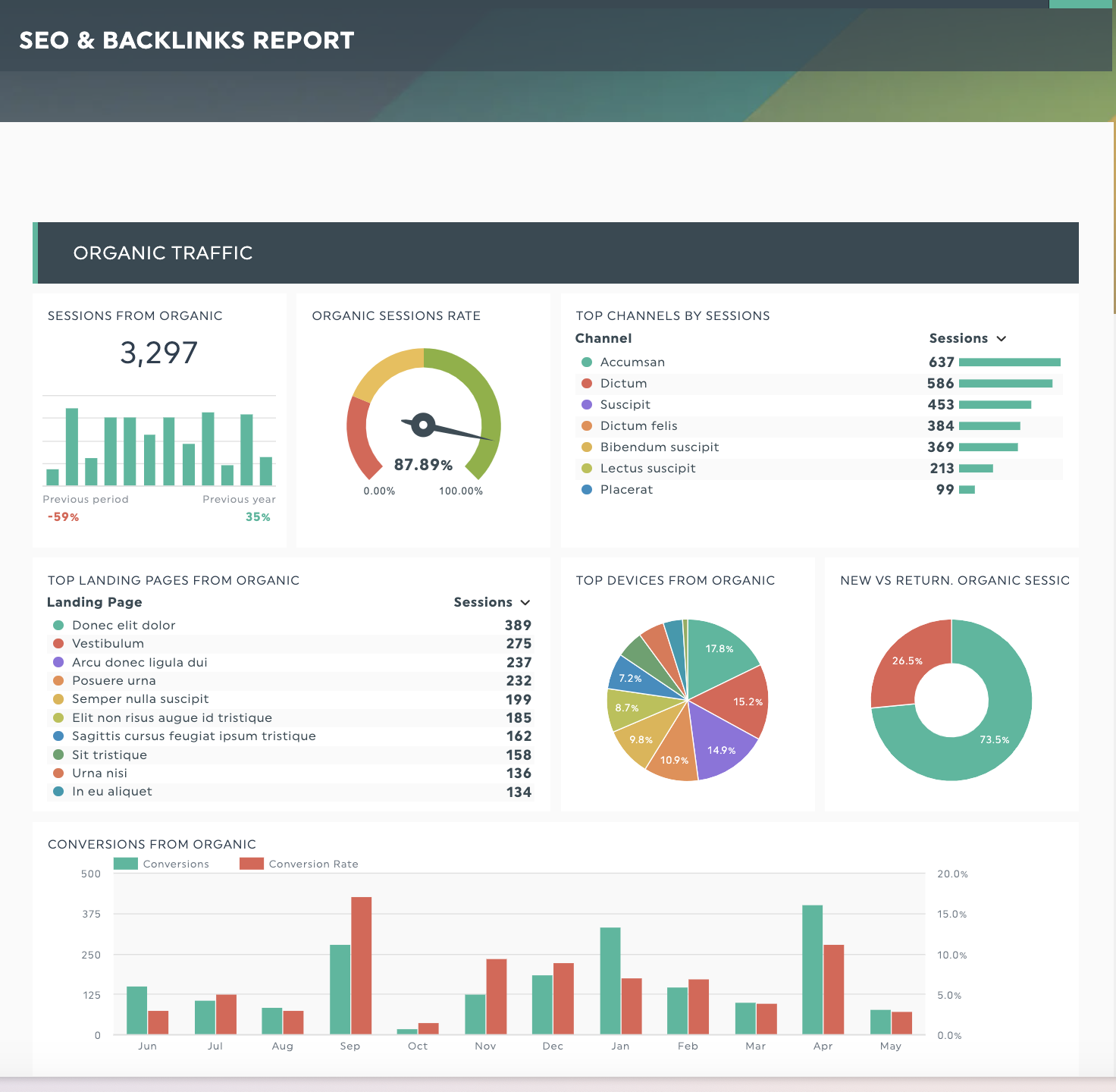
Get your SEO presentation template with your own data!
When you're working with clients, these marketing presentations can help you:
- Educate stakeholders on how search engines work and how they can benefit from your SEO services
- Conduct an SEO audit and highlight growth opportunities
- Explain your work approach before starting a new project
- Review client results during a quarterly business review or monthly report
Why add SEO presentations to your reporting repertoire?
SEO presentations are a great way to show the value of your SEO agency's work. Regular reporting shows transparency about your work and is a great way to build client trust. But why add them to your reporting toolkit? Here are three ways they can come in handy.
I. COMMUNICATE SEO STRATEGY AND SET EXPECTATIONS
Starting a new project together is exciting but also nerve-wracking.
Your clients want to know what you’ll be working on and what results they can expect. To make working together easier, build trust and set realistic expectations with your new client. Your SEO presentation could include a roadmap describing each component of your SEO strategy, an estimated timeline, and resources required for each task to start a new project on the right foot.
II. EXPLAIN WHAT IS SEO TO STAKEHOLDERS
People unfamiliar with digital marketing might have a hard time understanding SEO. SEO presentations can explain how your work fits into your client's marketing strategy. They can also connect your efforts to metrics your clients care about.
For example, you could explain to a head of sales how SEO grows the sales pipeline or has a lower cost per lead than other channels. This approach makes your information more relatable to them as it directly relates to their goals.
III. HIGHLIGHT SEO RESULTS AND ROI
SEO initiatives take on average 6-12 months to see significant results.
That’s a long time, and your clients will need reassurance along the way. Regular presentations and reporting keep clients updated on the latest results and ROI. For example, you could show clients how your work impacts them by highlighting changes in search visibility or organic conversion rates since you started working with them.
What to include in your SEO presentation
From the get-go, an SEO presentation answers these questions.
- What are you planning to do? (e.g., SEO strategy overview, project scope, and recommendations to meet client goals)
- Why are you doing it? (Findings from keyword research, site audit, competitor analysis, and data analysis)
- How are you doing it? (Concrete next steps backed by data and analysis where relevant)
- How are you measuring progress? (KPIs tracked, reporting frequency)
Here’s what to include in each element and a suggested structure for you to use.
1. Introduction and executive summary
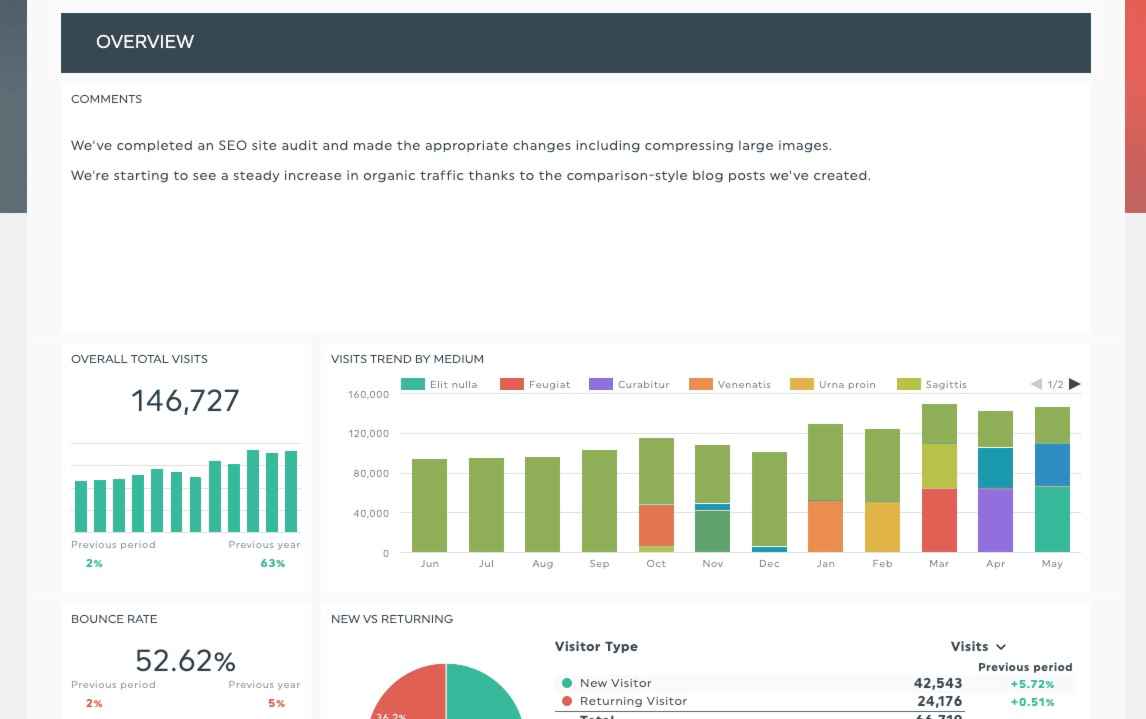
The introduction provides a concise topic overview. It clarifies your main points, allowing clients to digest your report. List your SEO plan’s objectives and what you aim to cover in the presentation.
On a separate slide or page, you should briefly describe your team members and their relevant experience. This will help your client put faces to names and reassure them they’re in safe hands.
2. SEO strategy overview
After the introduction, you’ll give your client an overview of your proposed strategy. For example, you could include:
- A concise description of the SEO strategy
- A site audit and research to highlight growth opportunities
- Key SEO initiatives
- KPIs to measure progress
- Reporting cadence and schedule
Kayden Roberts, CMO at CamGo, outlines his approach to SEO presentations here:
I like to structure the presentation by starting with the big picture—how SEO directly ties back to the client’s business objectives. It’s easy to get bogged down in metrics, but clients care most about how SEO drives their bottom line. So, I always frame the conversation around key business goals like increasing organic traffic, improving conversions, or boosting visibility for specific products or services.
Kayden also uses data storytelling to focus the presentation on the client's needs. Here's how he puts it:
One creative approach we’ve used is incorporating narrative-driven visuals. Instead of just throwing up charts and graphs, I tell a story with the data. For example, it shows how an SEO campaign started with low rankings and grew over time due to targeted keyword optimization and link-building efforts.
Next, we will discuss how to propose an SEO initiative to your client using keyword research and competitor analysis to inform your recommendations.
3. Keyword research
Keyword and audience research form the foundation of SEO strategy. Here, present keyword opportunities based on:
- Market and business potential
- Target audience research
- Competitor research
- Current website's performance
For each keyword, present data like search volume and the level of competition to beat. This will show your client where you’ll focus next and why it is important for their business.
Read more: A guide on conducting keyword research and competitor research with DashThis, as well as a list of suggested tools to visualize your SEO findings.
DashThis lets you input data from all your keyword tools, like Ahrefs, Moz, or SEMRush into a single keyword ranking report. Here’s a template you can see live with your own data.

Once you’ve compiled your research, summarize these findings by adding a note to these metrics or writing a few key points in a comment box.
4. Competitor SEO research
Besides keyword ranking data, show your client how competitive search rankings are for their industry and the target keyword. Outline 3-4 key competitors, assess their websites, and determine how difficult it is to outrank them.
You can also compare your client's current performance to their top competitors. Compare metrics like keyword rankings, organic traffic, and referring domains. These metrics show areas for growth and lay the groundwork for your proposed SEO strategy.
5. Key SEO initiatives
With the keyword research and competitor analysis showing the 'why,' we now turn to the 'how.'
This implementation section forms the bulk of your presentation. You’ll discuss the SEO strategies you recommend and implement to meet your client's goals. Use your earlier findings to support each initiative you list, highlighting how they can help your clients meet their goals.
Pro tip: It’s worth supporting these findings with relevant customer case studies. They allow you to explain how these initiatives have benefitted other businesses in the same situation.
There are three types of SEO activities you can focus on.
ON-PAGE SEO:
This SEO type focuses on optimizing webpage content for search engines
Examples of on-page SEO optimization activities:
- Optimize the copy of existing website content and landing pages
- Review webpage title tag and meta descriptions.
- Refresh ranking and evergreen content to improve organic rankings
- Create high-quality content to rank for new keyword opportunities
OFF-PAGE SEO:
This SEO type focuses on activities that promote your website around the Internet.
Examples of off-page optimization initiatives:
- Link building activities
- Content marketing
- Social media content like LinkedIn and Instagram
- Press mentions
TECHNICAL SEO:
These activities make it easier for search engines to find, understand, and reference your content.
Examples of technical SEO activities:
- Page speed improvements
- User experience and site architecture enhancements
- Website security upgrades
- Mobile-optimization
6. Highlight SEO performance metrics to track
How will you measure progress toward your client's goals, or gauge if your efforts are paying off?
Measuring SEO KPIs gives you the answers you need. Link performance back to a metric for every initiative you propose.
Examples of SEO KPIs worth including in your presentation:
- Conversion rate from organic traffic
- Cost per acquisition
- Volume of organic website traffic,
- Ranking of client’s website on search engines
- Visibility on search engine result pages (SERP)
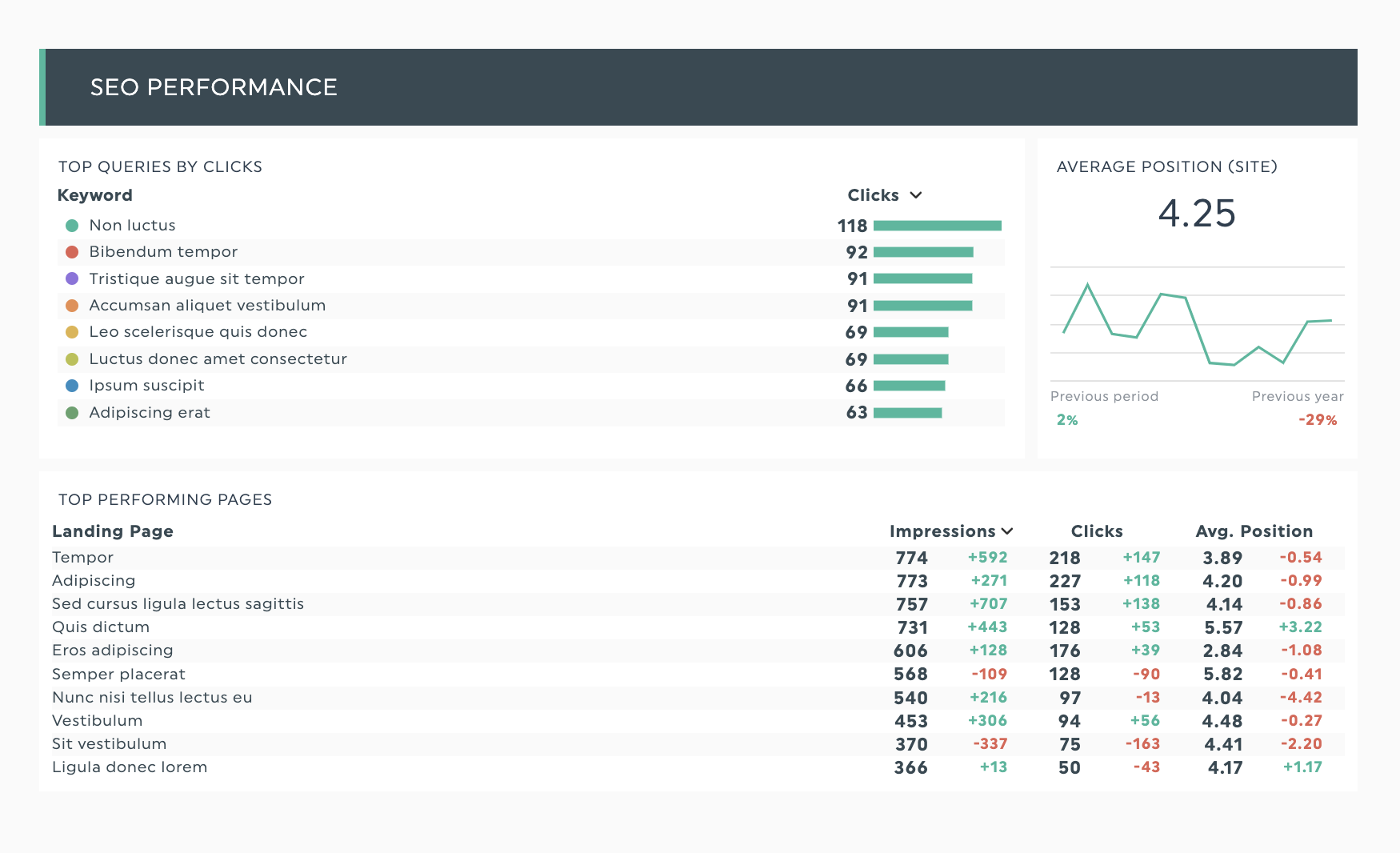
SEO performance metrics tracked in DashThis. Get this report with your own data!
To show how your client is performing against competitors, you could track metrics like
- Number of organic keywords in the top 10 positions by domain
- Organic website visibility
- Page rankings
- Number of backlinks or referring domains
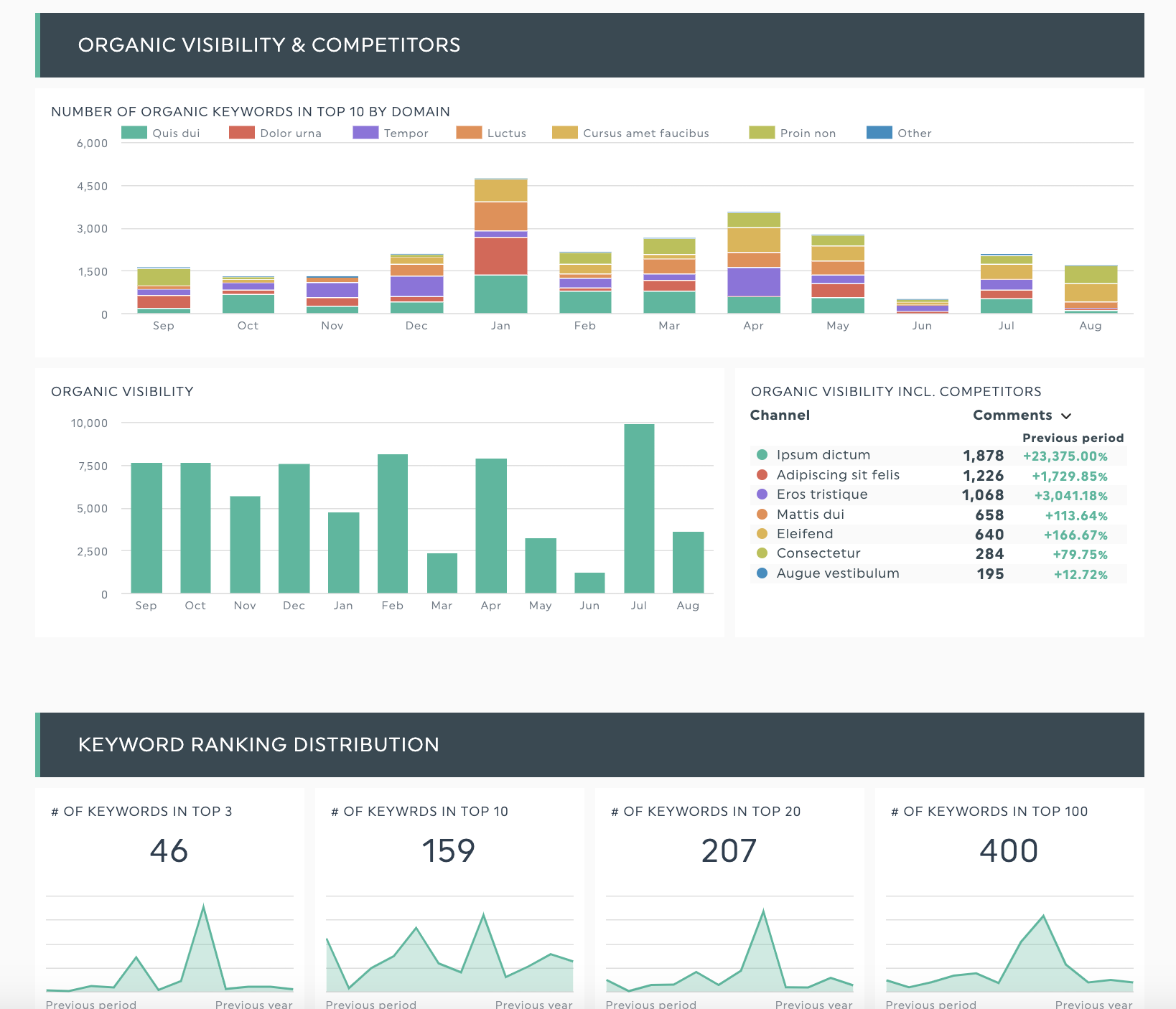
Tweak this section based on the goals you’re working towards and the SEO strategies you’re employing. Need more KPI inspiration? Check out DashThis’s list of 100+ KPI examples.
7. Conclusion and next steps
The conclusion is where you leave your client inspired and reassured. It’s where you recap key points and outline the next steps. Consider adding a timeline and time estimates for each activity to set expectations with your client.
“Don't skimp on your presentation's conclusion,” says Marta Romaniak, VP of Global Branding at Avenga. She elaborates:
“We usually wrap up with thoughts on what to do next. In my opinion, this, as well as how you start, is a crucial moment in your presentation. You need to convince the client that you think a few steps ahead and how, based on current results, you plan to achieve even more in the future. In other words, the ending should be inspiring!”
Practical tips for presenting SEO projects to your clients
You’ve got your SEO presentation document in hand - so now it’s time to nail the actual presentation. Keep these tips in mind as you prepare for your presentation.
Tip 1: Be clear about your presentation’s goal
Think about the purpose of your SEO presentation before you put it together. Is your aim to educate your audience with the latest practices in SEO? Or is it to build a case for expanding the project's scope?
Both aims need a different approach to presenting information. For example, if you're focusing on stakeholder education, share:
- Why SEO is effective.
- What brand competitors are doing in SEO.
- What you should do next.
Or, if you’re preparing for a project review, focus on the results you’ve achieved. You could, for instance, compare today's business metrics with those from six months ago.
Pro tip: Define an obvious goal for your presentation and have it at the top of your slide deck or report as you select metrics. It’ll help you stay on track.
Tip 2: Tailor your presentation to your audience
Next, adjust your presentation to fit the audience's knowledge level and interests. Put yourself in the audience's shoes and anticipate their questions and concerns regarding your presentation. For example, some questions you can consider asking here:
- What metrics or business outcomes do these people care about?
- Who are their stakeholders, and what do they expect from them?
- In what ways do they hope the presentation will benefit them?
It’s tempting to add every SEO metric and ranking factor to show all your work, but try to resist! Doing so will only dilute your core message and make it harder to follow. A helpful question you can ask yourself as you add information:
“Does this info address my stakeholders' main business concerns? Or, does it divert from them?
Pro tip: Do your best to simplify complex SEO terms. Tailor your language to your audience’s knowledge. If you must use terms like indexing or explain the latest algorithm update which affects your client’s search engine rankings, define them with a note. (Psst, our notes and comments feature can help you add an explanation without cluttering your presentation.)
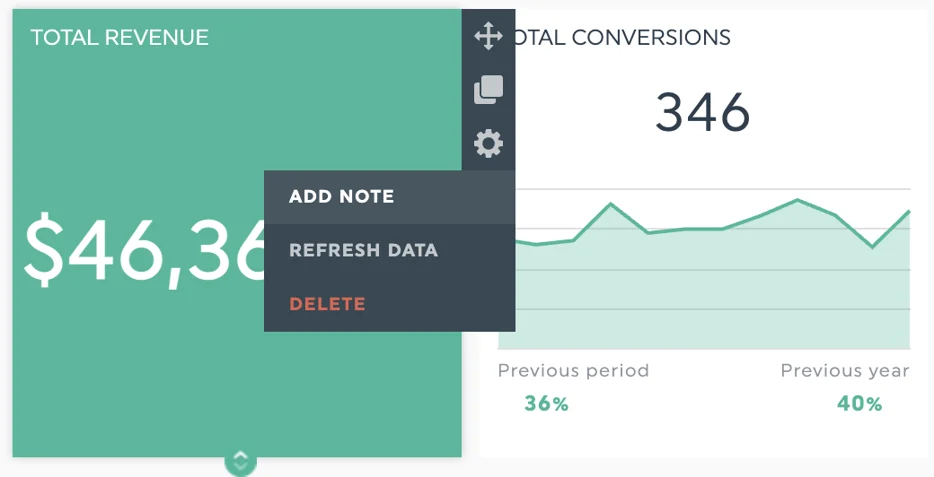
Tip 3: Use visual aids
Which would you rather see? Rows of Excel data showing organic traffic trends over time, or a line graph of the same trend?
Chances are, you’ll pick the graph.
Why? It’s much easier to digest information at a glance when it’s presented in a graph. Clients may not have time to read every detail of your SEO presentation. Eye-tracking studies show they’re more likely to scan presentations and reports and look for information relevant to them.
To accommodate scanning behavior, use charts and headings to help guide your client’s eye to what’s relevant to them. Take a look at these examples of charts that you can use to present your information.
Gauge charts: Gauges help communicate progress towards goals or visualize KPIs. So, if you’re aiming for a target organic conversion rate, you can use a gauge chart to track progress towards a goal.
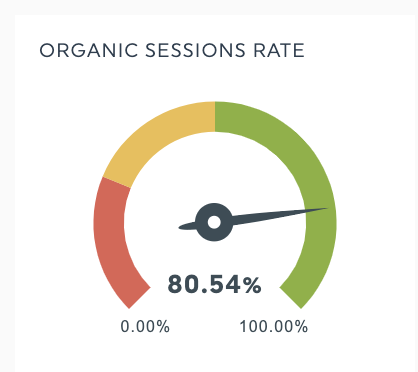
Bar charts: Track metrics over time. You could use bar charts to show month-over-month or year-over-year performance for a KPI. The example below shows this for conversions and conversion rates.

Line graphs: Use them to track one metric over time, like a site's average position or a keyword's SERP rank.
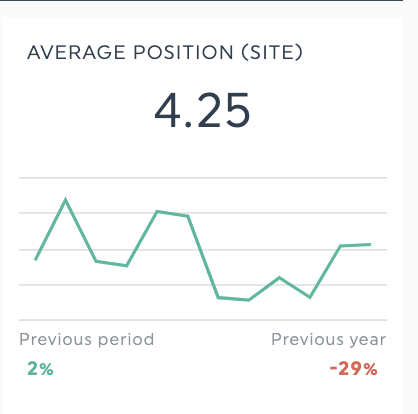
Text can also make data easier to understand. Label the axes of a line graph, title your charts, and add a legend. These simple additions make your data easier to understand.

To add or edit a chart title in DashThis, all you need to do here is go over to Edit Widget > Basic Settings > Widget Title
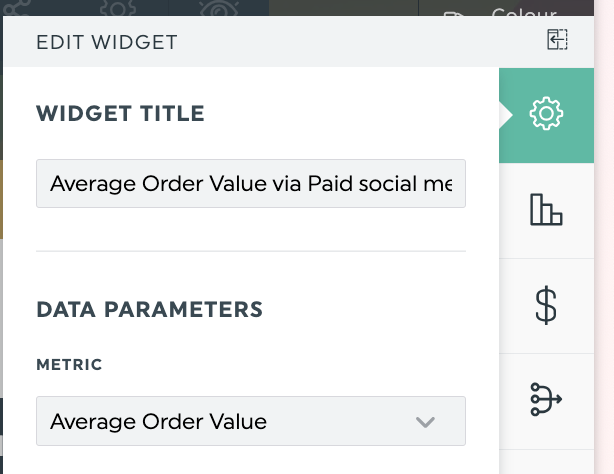
Tip 4: Anticipate common client questions in advance
As you present your SEO proposal or report, clients may ask questions.
First, don’t panic! When a client asks you a question, it shows they're engaged in what you have to say.
Preparation and rehearsing help here. Refer to the exercise earlier and map out potential questions your audience might ask. For example, if you’re presenting to a head of e-commerce, anticipate questions on how SEO increases online sales or boosts conversion rate.
How about some specific questions to expect? We asked SEOs and marketers what questions they got about SEO and how they answered them. Here’s what they had to say.
“Why isn’t our ranking improving faster?” “I always explain that SEO is a long game—especially with competitive terms. It can take months to see results, and search algorithms change regularly. Setting realistic timelines upfront has been key to managing expectations.
Tom Golubovich, Head of Marketing at Ninja Transfers
A question I get a lot is, “Why aren’t we ranking for this keyword yet?” I explain the factors that go into ranking—like competition, search intent, and algorithm updates—and reinforce the idea that SEO is a long-term strategy. I also reassure them by pointing to consistent progress in other areas, reminding them that sustained effort will eventually pay off.
Ally Moisse, Account Executive at Pearl Lemon Group
How DashThis can help you create SEO presentations in minutes
Let's put everything we’ve covered into action with this step-by-step guide.

Get your SEO report template with your own data!
DashThis makes creating SEO presentations easy in just a few steps.
- Select a ready-made SEO report template. All user-friendly templates include pre-set SEO KPIs paired with an appropriate visualization. This way, you don’t miss any important metrics. You can also build your own if you wish.
- Connect your SEO tools (e.g., Google Analytics, Ahrefs, Moz and more) with DashThis
- Organize your metrics with DashThis's drag-and-drop interface
- Make a template out of the presentation you've worked on
- Share your presentation by downloading it as a PDF, or schedule a regular dispatch to your client
Learn better with video? Watch this video to learn how to create your SEO presentation or report in just 5 minutes.
Automate your SEO reporting with DashThis
SEO presentations are your opportunity to show your agency’s expertise. They explain why SEO is relevant for your client’s goals and outline your work approach while being clear about how you measure progress.
If there's one thing to take from this article, it's this: emphasize the business value of your SEO efforts. Your client wants to know how your SEO work can solve their problems. Answer that, and it’s much easier to build trust and get the executive support you need for your work.
If you need help with reporting and analytics, let DashThis help you! DashThis is the most accessible SEO dashboard tool to help you visualize your data and analysis for your SEO presentation in minutes.
Ready to nail your SEO presentation?
Read More
Don’t miss out!
Automate your reports!
Bring all your marketing data into one automated report.
Try dashthis for free

